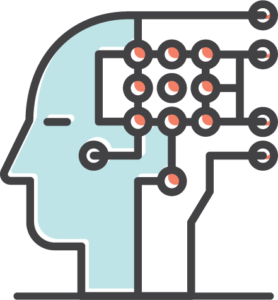AWS Certification Training
- 181k Enrolled Learners
- Weekend/Weekday
- Live Class
Azure Data Engineering is a rapidly growing field that involves designing, building, and maintaining data processing systems using Microsoft Azure technologies. As a certified Azure Data Engineer, you have the skills and expertise to design, implement and manage complex data storage and processing solutions on the Azure cloud platform. This blog will guide you in creating an effective Azure Data Engineer resume that highlights your skills, experience and achievements in the field, and helps you stand out in a competitive job market. Whether you are a seasoned professional or just starting your career in Azure Data Engineering, this blog will provide you with the tips and tricks you need to craft a winning resume.

As the demand for data engineers grows, having a well-written resume that stands out from the crowd is critical. Azure data engineers are essential in the design, implementation, and upkeep of cloud-based data solutions. Data ingestion, transformation, and storage are among their responsibilities, as are data governance and security. In this blog, we’ll go over the essential components of a strong Azure data engineer resume, such as Azure Data Engineer skills, professional experience, education and certifications, and other details.
Anyone seeking to work as an Azure Data Engineer must have a compelling resume. Your resume gives you the chance to introduce yourself to potential employers and frequently serves as the first impression you make on them. A strong resume can make you stand out from the competition and improve your chances of getting an interview.
A strong resume that highlights your accomplishments and expertise is especially crucial in the fiercely competitive field of Azure data engineering. Your resume is the place to demonstrate to employers that you have the knowledge and experience necessary to succeed in the position. You can show prospective employers that you have what it takes to succeed as an Azure Data Engineer by emphasising your accomplishments and pertinent experience.
Overall, having a strong resume is a requirement for pursuing a career as an Azure Data Engineer, so it’s worthwhile to invest the time in creating one that effectively communicates your abilities.
When crafting an Azure Data Engineer resume, it’s important to focus on the key skills and experience that are most relevant to the role. Some of the top skills to include are:
These skills are critical for success as an Azure Data Engineer, and showcasing them on your resume can help you stand out from other applicants and increase your chances of landing an interview. It’s also important to highlight specific examples of how you’ve applied these skills in previous roles to demonstrate your expertise and accomplishments.
Get cloud-certified and career-ready with our comprehensive Azure Solution Architect Training!
Technical expertise is undoubtedly an important part of a resume for an Azure Data Engineer.
Any Azure Data Engineer must have experience with Azure’s data storage options, including Azure Cosmos DB, Azure Data Lake Storage, and Azure Blob Storage. This demonstrates your knowledge of the various data storage options offered by Azure as well as your capacity to choose and put into practice the best option for a particular situation.
It is also crucial to have experience with data ingestion and transformation. This includes practical knowledge of data ingestion methods like incremental loading and bulk loading, as well as experience with data transformation using Azure Data Factory.
Python is commonly used in the field of data engineering for automating data pipelines and performing data analysis. It’s a versatile language that is well-suited to a wide range of data engineering tasks, and its use in Azure is widespread.
SQL is also an essential skill for Azure Data Engineers. This language is used to interact with databases and perform data manipulations and querying. Knowledge of SQL is critical for working with data stored in Azure data storage solutions like Azure Cosmos DB, Azure Data Lake Storage, and Azure Blob Storage.
By showcasing your proficiency in both Python and SQL on your resume, you demonstrate your technical skills and ability to perform a wide range of data engineering tasks in the Azure environment.
A desirable skill for an Azure Data Engineer is familiarity with big data and cloud-based analytics tools. The popular big data and cloud computing tools Apache Spark, Apache Hive, and Apache Storm are among these.
In order to process and analyze large and complex data sets in a distributed and parallel fashion, you can use Apache Spark, a potent big data processing engine. When querying big data kept in the cloud, Apache Hive, a data warehousing tool, offers an interface similar to SQL. High volumes of real-time data can be processed with ease using Apache Storm, a distributed real-time processing system.
Design and build advanced data solutions using Azure PaaS services to enhance data visualization. Assess the current production state of the application and evaluate the effect of new implementations on existing business processes.
Use Azure Data Factory, T-SQL, Spark SQL, and U-SQL Azure Data Lake Analytics to extract, transform, and load data from various sources into Azure data storage services. Ingest data into one or more Azure services, including Azure Data Lake, Azure Storage, Azure SQL, and Azure DW, and process the data in Azure Databricks.
Develop pipelines in ADF that extract, transform, and load data from sources such as Azure SQL, Blob storage, Azure SQL Data Warehouse, write-back tools, and others.
Create Spark applications using PySpark and Spark-SQL for data extraction, transformation, and aggregation from multiple file formats to uncover customer usage patterns.
Be responsible for estimating the cluster size, monitoring, and troubleshooting the Spark Databricks cluster. Have experience in tuning Spark applications for optimal performance, including setting the correct batch interval, parallelism level, and memory configuration.
Write UDFs in Scala and PySpark to meet specific business requirements. Develop JSON scripts for deploying pipelines in Azure Data Factory (ADF) that process data using SQL activities.
Have hands-on experience in developing SQL scripts for automation and created builds and releases for multiple projects in a production environment using Visual Studio Team Services (VSTS).
Here are examples of popular skills from Azure Data Engineer
Hadoop:

An open-source software framework called Hadoop is used to store and process large amounts of data on a cluster of inexpensive servers. The MapReduce programming model served as the foundation for its creation by the Apache Software Foundation. Large-scale data processing across numerous cluster nodes is made possible by Hadoop’s distributed file system (HDFS) and resource management platform (YARN). Its high scalability, fault tolerance, and simplicity make the framework a popular option for big data processing and analytics. Organizations frequently use Hadoop to store and analyse big data from a variety of sources, including social media, internet of things (IoT) devices, and log files.
Tableau:

Tableau is a business intelligence and data visualization software that enables users to connect, visualize, and share data insights. It offers an interactive and user-friendly interface for creating dashboards, reports, and charts from a variety of data sources such as spreadsheets, databases, and cloud-based sources.
Tableau offers both business users and data analysts strong and adaptable tools for exploring and understanding data. Data blending, calculated fields, reference lines, and trend lines are just a few of the features the software provides to help users find patterns, trends, and insights in their data and effectively communicate their findings.
Data Modeling:
Data modeling is the process of creating a conceptual representation of data. It is the process of defining the structure of data in a database, data warehouse, or any other data storage system. It helps in the design of efficient, scalable and maintainable databases, data warehouses, and data marts. Data modeling is critical for ensuring data accuracy, consistency, and security and is used to make informed decisions about the data architecture and management of an organization.
Data Warehousing:
The process of collecting, storing, and managing large amounts of data in a centralised repository, such as a data warehouse, to support business intelligence and decision-making processes is referred to as data warehousing. It entails designing, constructing, and operating a data warehouse capable of handling structured, semi-structured, and unstructured data from various sources, transforming it into a consistent format, and making it accessible for querying and analysis. Data warehousing’s goal is to facilitate efficient and effective data analysis by providing quick access to relevant and meaningful data in a single location.
Apache Kafka:

Apache Kafka is a decentralized publish-subscribe messaging system designed to handle data streams with high volume, high throughput, and low latency. It is ideal for use cases such as real-time data processing, data streaming, and event-driven architectures because it allows multiple consumers to read data concurrently. Apache Kafka is highly scalable, fault-tolerant, and scalable, and it provides reliable support for large amounts of data. It can also be integrated with a variety of data storage systems, including Cassandra, Hadoop, and others.
Amazon Web Services (AWS):

AWS provides a range of services that can be used to host and manage a blog. Some popular services include:
Empower your team and enhance your projects with cutting-edge Azure DevOps training online.
Python (Programming Language):

Python is a high-level, interpreted programming language that is widely used for various purposes, including web development, scientific computing, data analysis, artificial intelligence, and more. It is known for its simple and easy-to-learn syntax, making it a popular choice for beginners and experienced developers alike. With a large and active community, there are many libraries and frameworks available for use in Python, which makes it a versatile and powerful language for building a blog or any other web application. Some popular web frameworks for building a blog in Python include Django, Flask, and Pyramid.
PostgreSQL:
 PostgreSQL, also known as Postgres, is an open-source relational database management system that is widely used for web applications and other data-intensive applications. When building a blog, PostgreSQL can be used to store and manage the data required for the blog, such as articles, comments, and user information. One of the key features of PostgreSQL is its strong support for SQL (Structured Query Language), which allows developers to perform complex data operations and query the data in an efficient manner.
PostgreSQL, also known as Postgres, is an open-source relational database management system that is widely used for web applications and other data-intensive applications. When building a blog, PostgreSQL can be used to store and manage the data required for the blog, such as articles, comments, and user information. One of the key features of PostgreSQL is its strong support for SQL (Structured Query Language), which allows developers to perform complex data operations and query the data in an efficient manner.
Machine Learning:

Machine learning is a subfield of artificial intelligence that involves training algorithms to learn patterns and make predictions based on data. In a blog, machine learning can be used to provide various features and functionalities
Some relevant educational qualifications and certifications for an Azure data engineer include:
Become the architect of the future with the Azure Cloud Engineer Certification!
Here is a list of relevant certifications and additional training programs in Azure technology:
Adding your AI 900 certification to your Azure Data Engineer resume. It will be a great benefit to your resume. This certification confirms that you are good in AI and ML on Azure, showcasing your ability to integrate AI solutions with data engineering tasks. To know more Explore our AI 900 Certification Course today!
Here’s a rundown of the main points raised in the blog:
Get the updated Azure Data Engineering Interview Questions to prepare for the Data Engineering role and also know the difference between data analyst vs data scientist vs data engineer
A strong resume is essential for landing the job of Azure Data Engineer. A well-crafted resume shows potential employers your relevant educational qualifications, certifications, and hands-on experience, making you a strong candidate for the position.
Highlight your technical skills in your resume, including your experience with Azure data services and other cloud data technologies. Mention any relevant certifications, such as Microsoft Certified: Azure Data Engineer Associate, and explain any hands-on experience you’ve gained through courses or projects.
Rather than simply listing your responsibilities, emphasize your accomplishments. Highlight any projects on which you worked and how you contributed to their success, including any innovative solutions you developed, challenges you overcame, and results you delivered.
Know about
How can you get a data engineer job with no experience
How i become an Azure Data Engineer
With this we come to the end of this blog on Azure data engineer resume I hope you enjoyed learning about the small changes you can make in your resume which will have a big impact.
Check out if you want to take the Azure Data Engineer Certification Course to get your CV shortlisted quickly.
If you are interested in learning further and want assistance with other certifications, you can visit our Edureka website. Until then, happy learning!
 Thank you for registering Join Edureka Meetup community for 100+ Free Webinars each month JOIN MEETUP GROUP
Thank you for registering Join Edureka Meetup community for 100+ Free Webinars each month JOIN MEETUP GROUPedureka.co